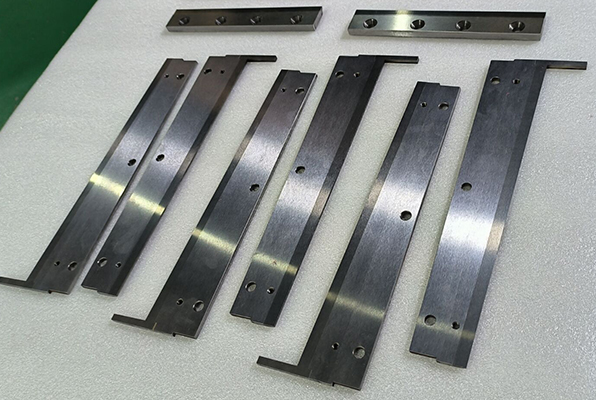Blog: Innovations & Insights

February 2024
Innovations in Metal Processing: A Glimpse into Tomorrow’s Techniques
The metal processing industry is on the cusp of a transformation driven by technological advancements. These innovations are not just refining existing practices but are paving the way for a future where efficiency, sustainability, and precision define manufacturing processes. Below, we explore the key innovations set to redefine metal processing.
The Advent of AI and Machine Learning
Artificial Intelligence (AI) and Machine Learning (ML) are revolutionizing metal processing by:
- Predicting Outcomes: Analyzing vast datasets to predict machinery maintenance needs and optimize production processes.
- Automating Decision-Making: Enabling real-time adjustments in manufacturing operations, thereby increasing efficiency and product quality.
- Enhancing Equipment Performance: Predictive maintenance schedules minimize downtime, while ML algorithms adapt cutting speeds to ensure optimal performance.
Sustainable Manufacturing Practices
Sustainability is becoming integral to metal processing, with innovations aimed at:
- Recycling: Utilizing electric arc furnaces (EAF) to recycle scrap metal, reducing reliance on virgin materials and lowering carbon emissions.
- Reducing Waste: Advancements in chemical milling and waterjet cutting minimize hazardous waste and water usage.
- Developing Sustainable Materials: Innovating eco-friendlier materials and coatings to ensure high-quality manufacturing that is better for the environment.
The Development of New Alloys
The creation of new alloys is key to advancing metal processing, featuring:
- Stronger Materials: Computational models and high-throughput experimentation are leading to alloys that are stronger, lighter, and more corrosion-resistant.
- Tailored Properties: High-entropy alloys (HEAs) offer a combination of strength, ductility, and resistance to wear and corrosion, outperforming traditional alloys.
- Industry-specific Applications: Alloys designed for specific industries, enhancing safety, efficiency, and sustainability in aerospace, automotive, and construction.
The Role of 3D Printing in Metal Fabrication
3D printing is reshaping metal fabrication by:
- Enabling Complex Designs: Allowing for the creation of structures that are impossible with traditional methods.
- Promoting On-demand Production: Reducing inventory costs and waste with the flexibility of additive manufacturing.
- Extending Product Lifecycle: Offering new possibilities for part repair and refurbishment, contributing to sustainability.
Advanced Robotics and Automation
Robotics and automation are reaching new sophistication levels in metal processing through:
- Adaptable Robots: Capable of performing complex tasks with high precision alongside human workers.
- Collaborative Robots (Cobots): Enhancing safety and efficiency without replacing the workforce.
- Integrated Technologies: Combining advanced sensing technologies and IoT connectivity for real-time monitoring and control.
Conclusion
The path forward for metal processing is illuminated by these technological innovations, promising a future of enhanced efficiency, product quality, and environmental stewardship. For companies like Quick Metals, embracing these advancements is essential for staying competitive and contributing to a sustainable manufacturing future. As we embark on this exciting journey, the potential for transformation in metal processing is boundless, offering a glimpse into a future where innovation leads the way.
